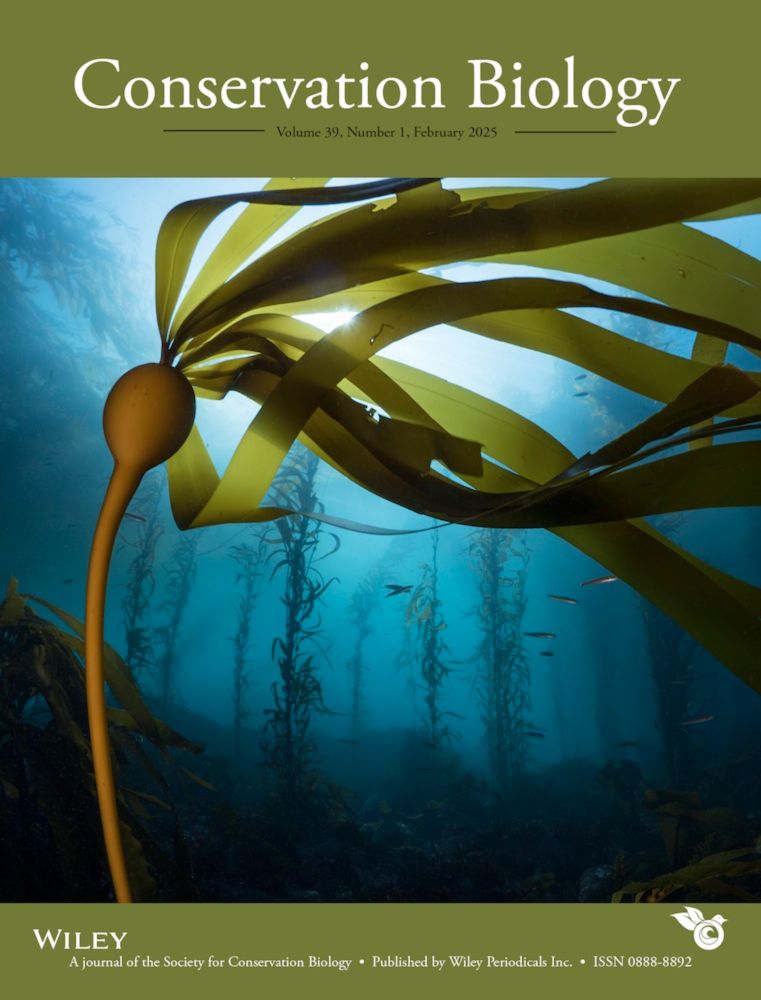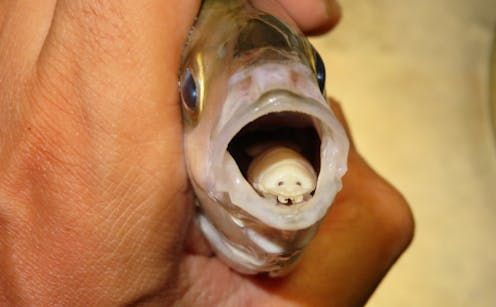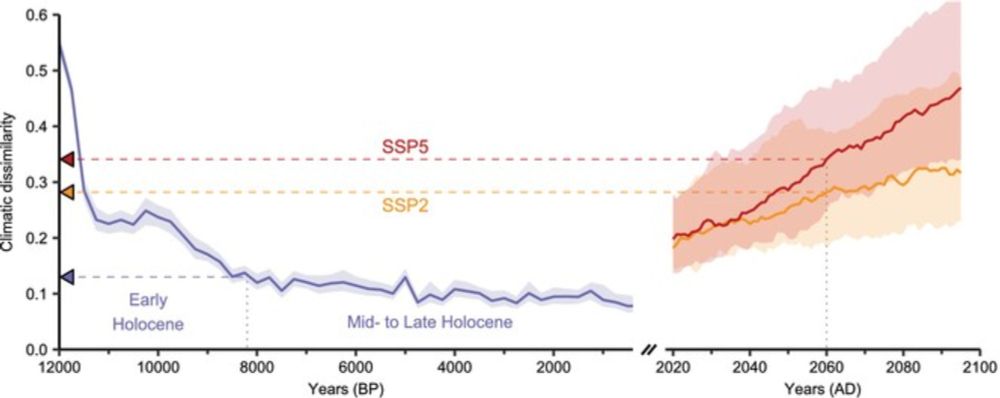
Large model of a green caterpillar, the back of which is covered by dozens of white cocoons. Wasps can be seen emerging from some of the cocoons.
Spookiest decoration at the "Zoo Goes Boo" event at the John Ball Zoo in Grand Rapids? Giant model of parasitoid wasps hatching from cocoons affixed to their caterpillar host.
13.10.2025 00:26 — 👍 455 🔁 118 💬 12 📌 10
You probably have a general idea of what a tick looks like, but did you know that there are three distinct families of ticks, each with their own appearance, habitat, and adaptations? These families are the Ixodidae (or hard ticks), Argasidae (or soft ticks), and the Nuttalliellidae. (1/4)
03.10.2025 22:42 — 👍 3 🔁 2 💬 1 📌 0

Unsettling Extinction
Featuring contributions from key names in the field alongside some of the most exciting new voices, this collection presents cutting-edge work on species extinc…
www.bloomsbury.com/uk/unsettlin...
No cover yet, but there's a web page. Incredibly pleased to be part of this important - and affordable! - volume on extinction studies. Pre-order now because I promise it will be good
02.10.2025 07:50 — 👍 14 🔁 4 💬 0 📌 0
checking a species name with GBIF after not finding it via NCBI feels very much like the asking your Dad after your Mum already told you "No" of taxonomy
14.08.2025 14:30 — 👍 0 🔁 0 💬 0 📌 0
weren't you meant to post this after our paper review meeting this afternoon?
14.03.2025 12:55 — 👍 1 🔁 0 💬 1 📌 0
UK followers under 35, please consider filling in this form to help researchers better understand modern dating.
11.03.2025 14:40 — 👍 2 🔁 1 💬 0 📌 0
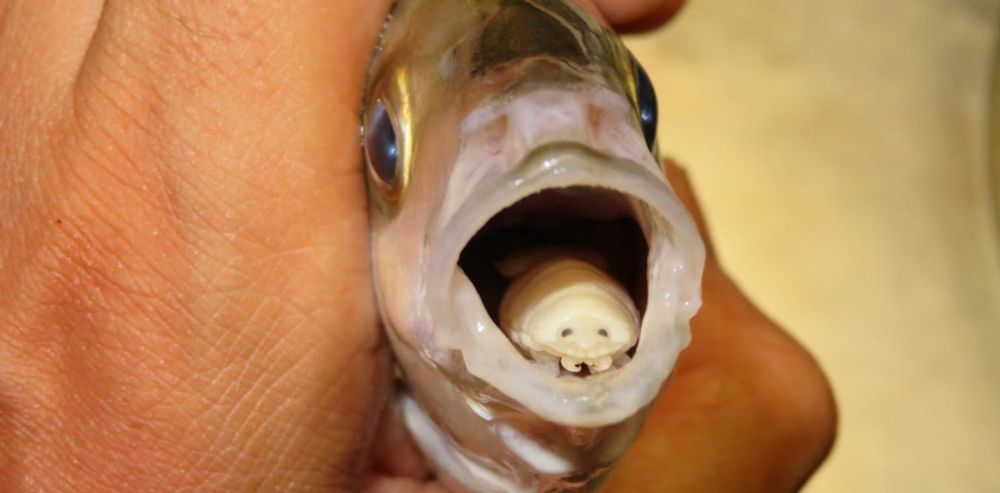
Parasites are ecological dark matter – and they need protecting
Save the pandas, sure, but what about the worms in their guts?
We wrote this as a fun introduction to the strange and wonderful world of parasite conservation!
Hopefully it gets you thinking about how there's more than meets the eye with parasites and whether we should bring them into the fold of conservation concern
theconversation.com/parasites-ar...
11.03.2025 11:45 — 👍 3 🔁 0 💬 1 📌 0
my extremely nuanced opinion on the woolly mice is that they are very cute (good), but mean basically nothing as far as conservation is concerned (less good) and are really just a PR exercise for a somewhat malevolent profit-making machine (bad)
07.03.2025 14:19 — 👍 9 🔁 2 💬 0 📌 0
Am I right in thinking that Colossal's (non-)conservation work allows them to patent a lot of genetic technology which they could then make massive profits from if/when those technologies are used for wider applications than woolly mammoth PR?
07.03.2025 14:13 — 👍 1 🔁 0 💬 0 📌 0
Interdisciplinary research is not only hugely valuable, it's also a hell of a lot easier than people make out - the hard part is fighting the institutions to get them to let you do it
13.02.2025 11:04 — 👍 1 🔁 1 💬 0 📌 0
In my section, I talk about:
- my own taxonomic biases in the field
- the mighty Manx shearwater flea
- the role of photography in conservation
- and whether photography might boost or buffer parasite conservation
(including a rare opportunity for me to cite the great John Berger...)
12.02.2025 14:55 — 👍 2 🔁 0 💬 0 📌 0
Extinction studies in focus: Reflections on photography at a time of ecological decline | Cambridge Prisms: Extinction | Cambridge Core
Extinction studies in focus: Reflections on photography at a time of ecological decline - Volume 3
Really excited to share this paper which was the result of a big collaborative effort of PhD students @extinctionleeds.bsky.social!
It's full of incredible, original thoughts about how we view and interact with the world around us in a time of massive biodiversity loss 📷🍃
doi.org/10.1017/ext....
12.02.2025 14:55 — 👍 3 🔁 4 💬 2 📌 0
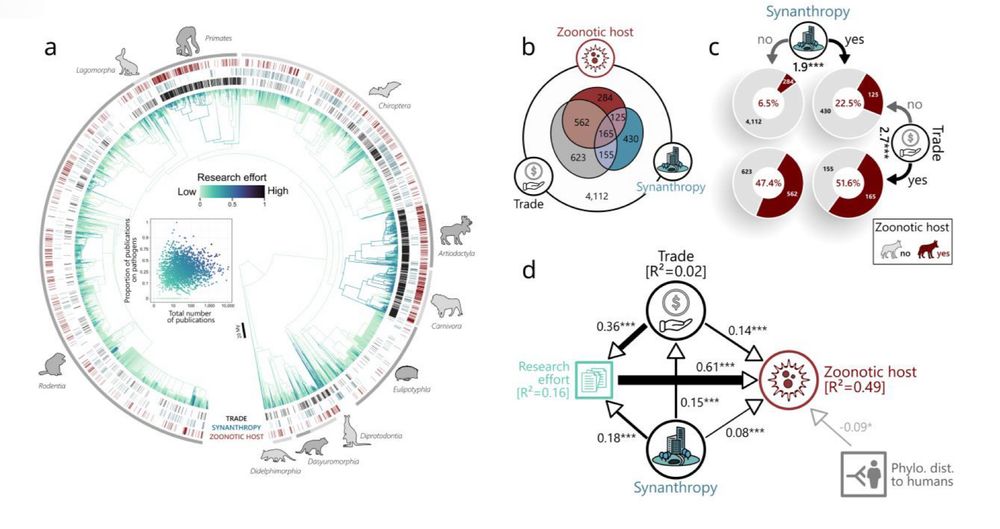
Phylogenetic map of wildlife trade; graphs showing overlap with other traits like synanthropy; path analysis showing impact on zoonotic host status
Huge analysis out as a preprint today! For every 9 years an animal spends in the wildlife trade, it shares an additional pathogen with humans. Clear long-term impacts based on 40 years of global trade data 🧪😷 biorxiv.org/content/earl...
10.02.2025 13:39 — 👍 155 🔁 54 💬 3 📌 6
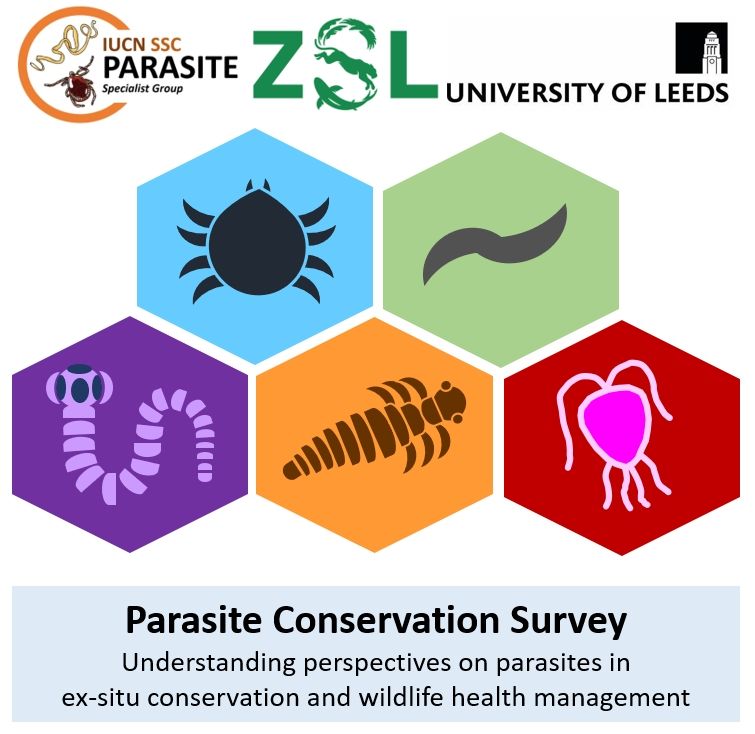
A logo for the University of Leeds parasite conservation survey featuring 5 coloured hexagons containing icons of different parasites such as ticks, worms and protozoa.
Hey #WildlifeDisease & #conservation folk, please check out our survey on attitudes to parasite conservation.
Are parasites important for biodiversity, would you remove them to protect host welfare, or something more nuanced? We want to hear all views to improve guidance for practitioners 🪱🧪🌍🧵1/n
29.01.2025 12:19 — 👍 25 🔁 20 💬 3 📌 2
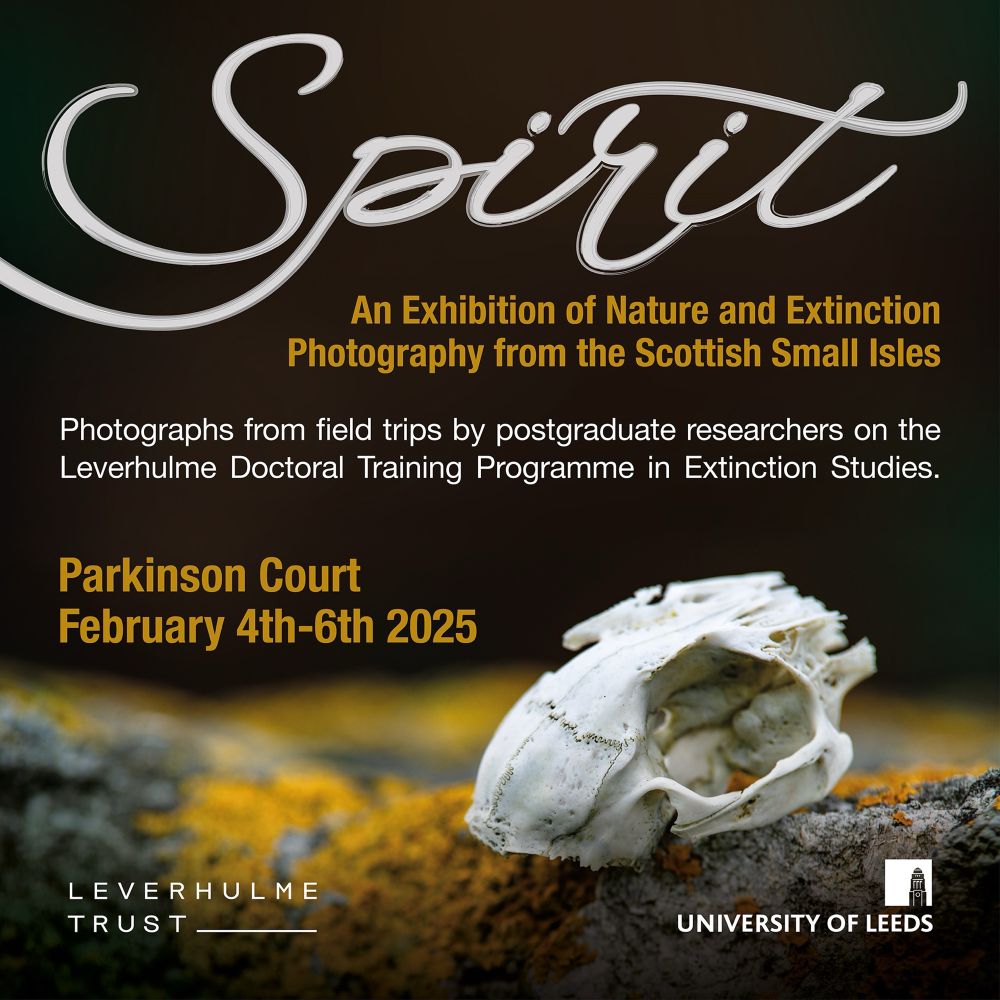
A poster for an exhibition. Features an animal skull on rocks with orange lichen.
Come and see some of the work we’ve been doing… SPIRIT: an exhibition of nature photography from the Scottish Small Isles. Parkinson Court, 4-6 Feb.
27.01.2025 14:59 — 👍 12 🔁 4 💬 0 📌 2
Really enjoyed this truly interdisciplinary paper on hookworm in early 20th c. Jamaica!
Jon historicises hookworm infection and extinction, showing how plantations (+ environment & individual factors) created the conditions for hookworm to thrive, but were also key in eradication/extinction efforts
05.02.2025 15:10 — 👍 1 🔁 1 💬 1 📌 0
A lot of awesome pictures in the full paper!
31.01.2025 16:10 — 👍 2 🔁 0 💬 0 📌 0
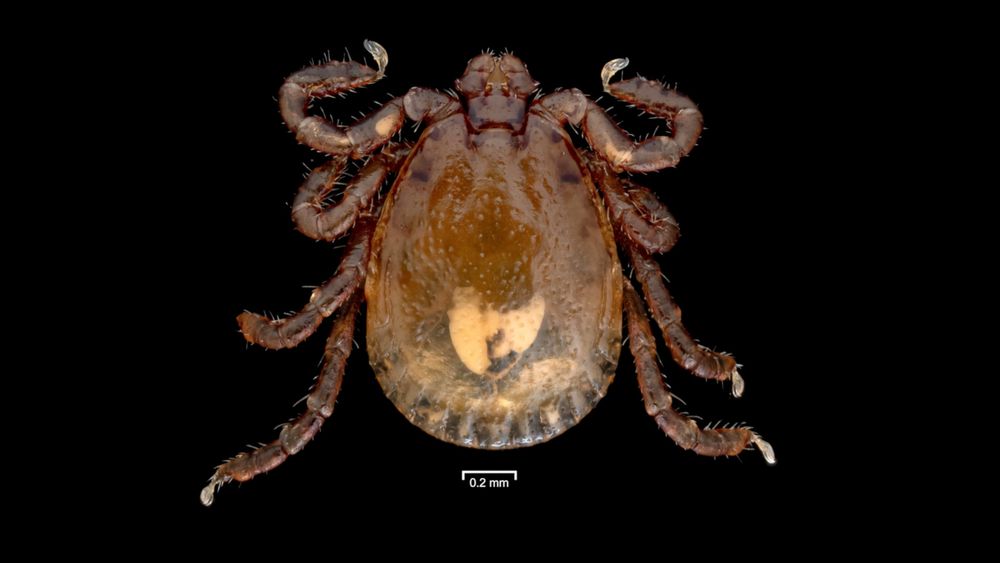
Saving the Ryukyu Rabbit Tick: The Posterchild of Parasite Conservation • The Revelator
This endangered invertebrate is harmless to humans — and rabbits. Saving it from extinction might even benefit both species.
Parasite conservation sounds like a counterintuitive idea, but actually there are lots of reasons why this is important for the long term sustainability of biodiversity and ecosystem processes. #parasitology #ticks #ectoparasite 🪱🧪🌍
therevelator.org/ryukyu-rabbi...
22.01.2025 17:11 — 👍 82 🔁 31 💬 3 📌 2
We consider:
- The importance of human values and attitudes for conservation
- Unanswered questions over whether parasites merit conservation
Our solution? More interdisciplinary research on parasite conservation will lead to better conservation outcomes for parasites, hosts, and people 🌳🌍🥰
[3/3]
20.01.2025 14:08 — 👍 3 🔁 0 💬 0 📌 0
We report on a LARGE gap 🚧 between parasite conservation research and parasite conservation practice.
E.g. Did you know only one animal parasite species, the pygmy hog-sucking louse, has been evaluated and listed on the IUCN Red List?
We then explore why this research-practice gap exists.
[2/3]
20.01.2025 14:08 — 👍 3 🔁 0 💬 1 📌 0
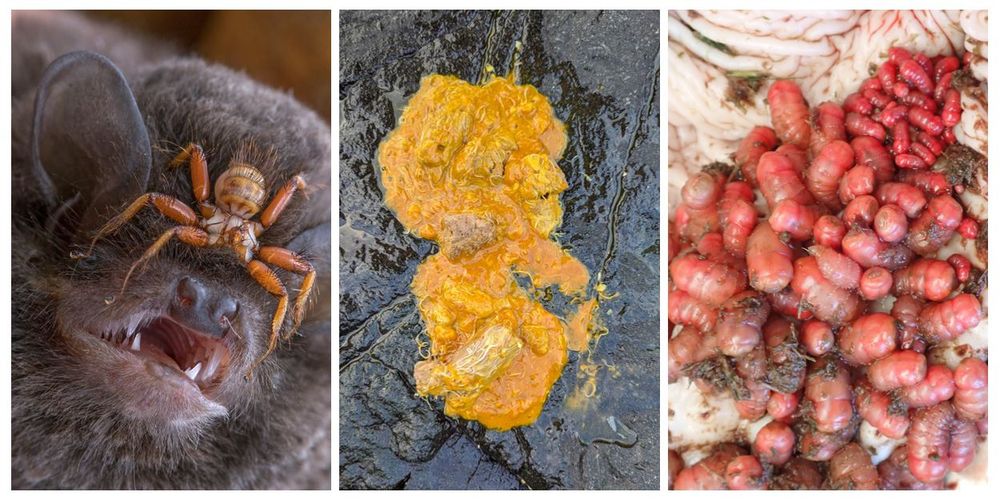
A panel showing three images of parasites. From left to right: a bat fly clinging to the face of a Mozambique long-fingered bat, a mass of helminths in the feces of a gray seal, botfly larvae from the stomach of a mountain zebra.
Ever heard of parasite conservation and thought "Why on earth would we want to do that 😱"?! Read our new paper to find out...
We cover key questions including: Why conserve parasites? How do you conserve parasites? & What parasite conservation is already happening?
doi.org/10.1111/cobi...
[1/3]
20.01.2025 14:08 — 👍 13 🔁 8 💬 1 📌 2
How have freshwater fish populations responded to warming temperatures over the past 75 yrs?
We found a characteristic pattern of climate change-induced changes in river fish populations, with differing impact for different species depending on key characteristics.
See our new paper for more info!
20.01.2025 13:30 — 👍 3 🔁 0 💬 0 📌 0
Welcome to the official page of the IUCN SSC Parasite Specialist Group! We're an IUCN network of scientists and practitioners working on the conservation of rare and ecologically important parasite species.
Official Website: https://www.iucnparasites.com
Artist, naturalist, author, cyclist. Loves insects/invertebrates especially solitary bees & harvestmen. County Recorder for Harvestmen and Pseudoscorpions. Hefted to Norfolk.
Website https://arthropedia.co.uk/
We work on planetary problems. Currently: counting climate change-related deaths; pandemic risk assessment in a changing biosphere; data, science, and vaccine access during public health emergencies. 👉 carlsonlab.bio
Animals, postcolonial studies, literary theory & more.
Teaching Associate at the University of Cambridge: https://www.english.cam.ac.uk/people/Dominic.O'Key
Author of 'Creaturely Forms in Contemporary Literature': http://bit.ly/35GSkyE
I am a professor of tropical ecology at the University of York. I have a passion for Mountain ecosystems and cultures across the Global South, particularly in Kenya and Tanzania where I work with many Universities, NGOs and Government organisations.
A network bringing together postgrads and ECR scholars from universities in northern England and Scotland working in the field of environmental history.
Associate Prof @UoBrisEnglish 🏳️🌈 A FLAT PLACE (Hamish Hamilton/MHP 2023) HARD LANGUAGE (OUP 2022) 🐨 AHRC/BBC New Generation Thinker 🐈⬛ rep: @mfredturner
PhD researcher at University of Cologne & University of Twente | Studying wildlife conservation & disease control in Botswana
Professor of Linguistics at the University of Leeds. Leverhulme Extinction Studies DTP. Linguistic diversity and biodiversity. All views my own.
Fishkop. Assoc. Prof. URKI Future Leaders Fellow. Invasion & conservation scientist. Slightly feral. (She/her 🏳️🌈)
A specialist unit within @leedsprhs.bsky.social at University of Leeds where we blend theoretical enquiry & real-world experience to address complex ethical issues facing the world today via teaching, research & consultancy & training in applied ethics.
Geographer, thinking & writing about: oceans, marine biotech, biobanking, illegal wildlife trade & caviar
Simon Research Fellow @uomseed.bsky.social
Secretary of @rgs-agwg.bsky.social
PhD student @envleeds.bsky.social researching dark extinction of trees and their epibionts: could engaging with shadow diversity make a difference? #eDNA #commmunityscience #interdisciplinary #EnvironmentalPsychology #envhum 🌳🌲🍄🟫🪱🦠
she/her | views my own
Parasite enthusiast and chipmunk whisperer. Associate Curator of Terrestrial Mammals at the Natural History Museum of Los Angeles County
Views & posts mine. she/her
kaycebell.com
Field philosopher and writer. Professor of Environmental Humanities at the University of Sydney. Author of "Flight Ways," "The Wake of Crows," and "A World in a Shell."
www.thomvandooren.org
Musican, historian and biologist. Melodic ambient soundscapes and parasitic worms. He/him
Researching hookworm, guinea worm, environmental history, parasitology, ecology, and Caribbean & Cornish history.
PhD student (conservation performance payments for large carnivores) @ Uni of Leeds
The Extinction Studies Doctoral Training Programme provides an interdisciplinary training programme for PhD students to work extinction and its meanings. Funded by @leverhulme.bsky.social and based at @universityofleeds.bsky.social.
Extinction DTP PhD student at the University of Leeds. Coral reefs, environment, climate, marine protection, diving, functional traits, species interactions, interdisciplinary research.


